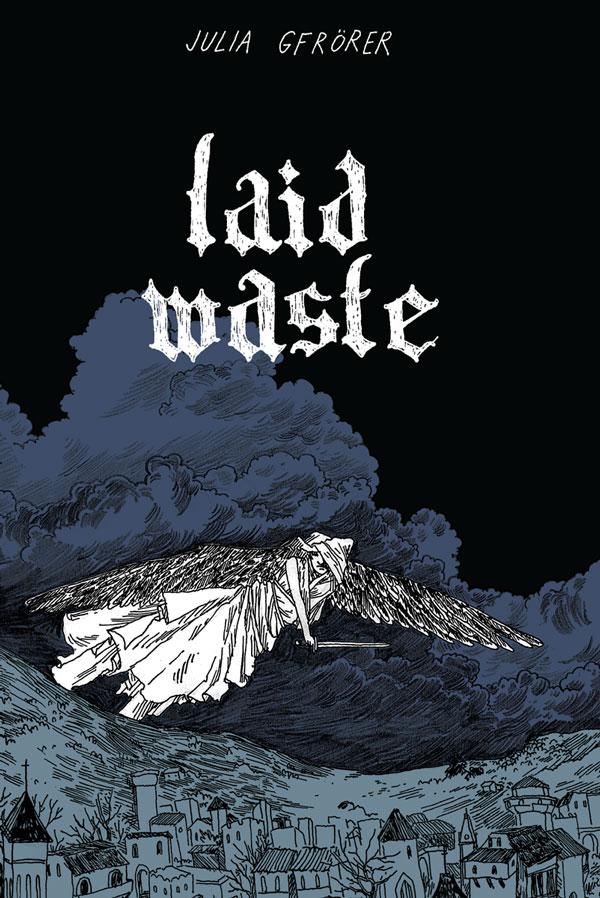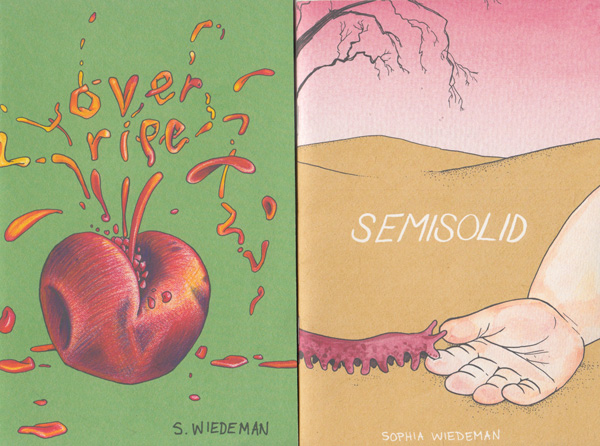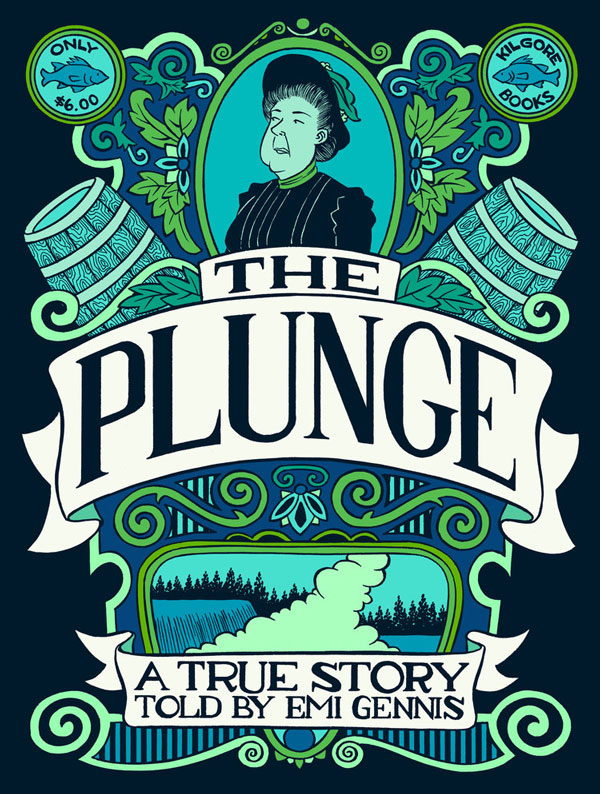This excruciatingly sad novella has Julia Gfrörer examining the horror of being a survivor, in a way that manages to be uplifting at the end, while not betraying the heaviness of all that proceeds it. Laid Waste concerns itself with Agnes who, it is said, had a vision of St. Catherine as a child and from that moment on became impervious to injury and sickness. We first meet her as a child in one harrowing moment, but later as a grown woman watching the world around her decay and disappear. Taking place in a medieval time that is dominated by a plague, Agnes watches as the villagers around her die and become litter on the landscape, which is marked by the endless pile of corpses that is fed by people dispensing of their loved ones. Agnes shows she is a survivor not just physically, but also emotionally as she clings to brief moments and small gestures that work to convince her that there is something worth carrying on for, despite all the horror she is witnessing. Gfrörer’s stark line drawings create an ambience that is hard to shake in realizing Agnes’ world.
Over Ripe and Semisolid by Sophia Wiedeman
These two titles from Wiedeman cover well cover her scope. Over Ripe is dominated by short insightful nostalgia which sees her looking back to a beloved dog and building the connections between herself and her mother through the contents of the drawers in their respective night tables. With each rumination, Wiedeman takes delicate care to hover over each point. Meanwhile, Semisolid is full length journey into her more surrealist, darker side, as a young woman finds her way through a sudden door and through a short journey and one strange encounter finds her way to a tranquil place within nature. All three stories have in common the journey and the destination, where the various encounters on the former lead to the soothing warmth of the latter, like a life well-lived.
Gennis has done well in the area of short non-fiction works, usually covering the macabre or weird, but with The Plunge she really outdoes herself with this recounting of and rumination on Annie Edson Taylor’s conquest of Niagara Falls in a barrel. Going over the Falls is a curious bit of Americana, and Gennis goes over Taylor’s biography, as well as the event, with one question at the forefront: Why? In examining the possible answers, Gennis works through the truth and fibs of Taylor’s own biographical claims, and puts them in context of a woman’s place at that time in history, and Taylor’s breaking away from aspects of that role. Indeed, this is a feminist examination of Taylor, placing her directly in a role of unsung feminist hero without pandering or even offering any bravado — she just lets the events speak for themselves, and presents Taylor’s approach to the Falls as understandably cautious, but with a brave nature that seems genuine. Gennis’ artwork is also top form here, and her presentation of the barrel going over the Falls with Taylor in it is frantic, alarming, and transformative, offering a sequence that shows her amazing evolution as a visual storyteller.










